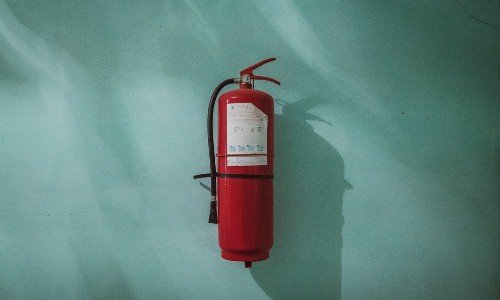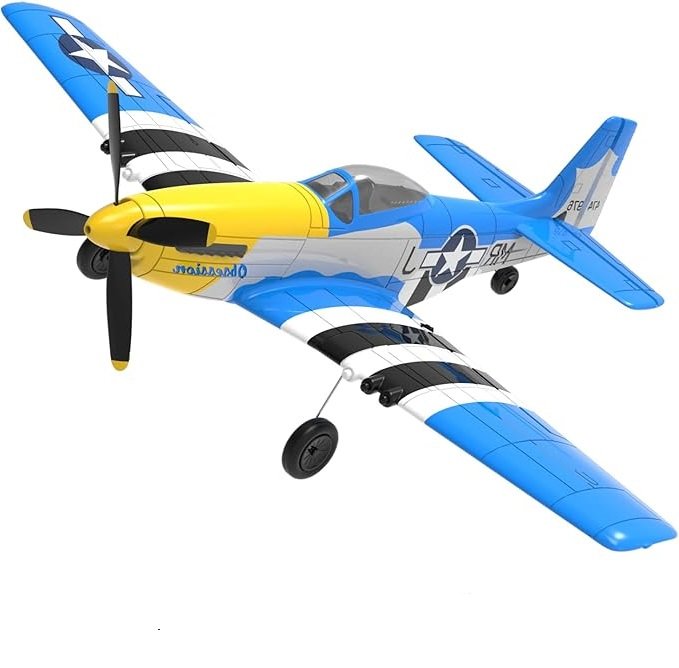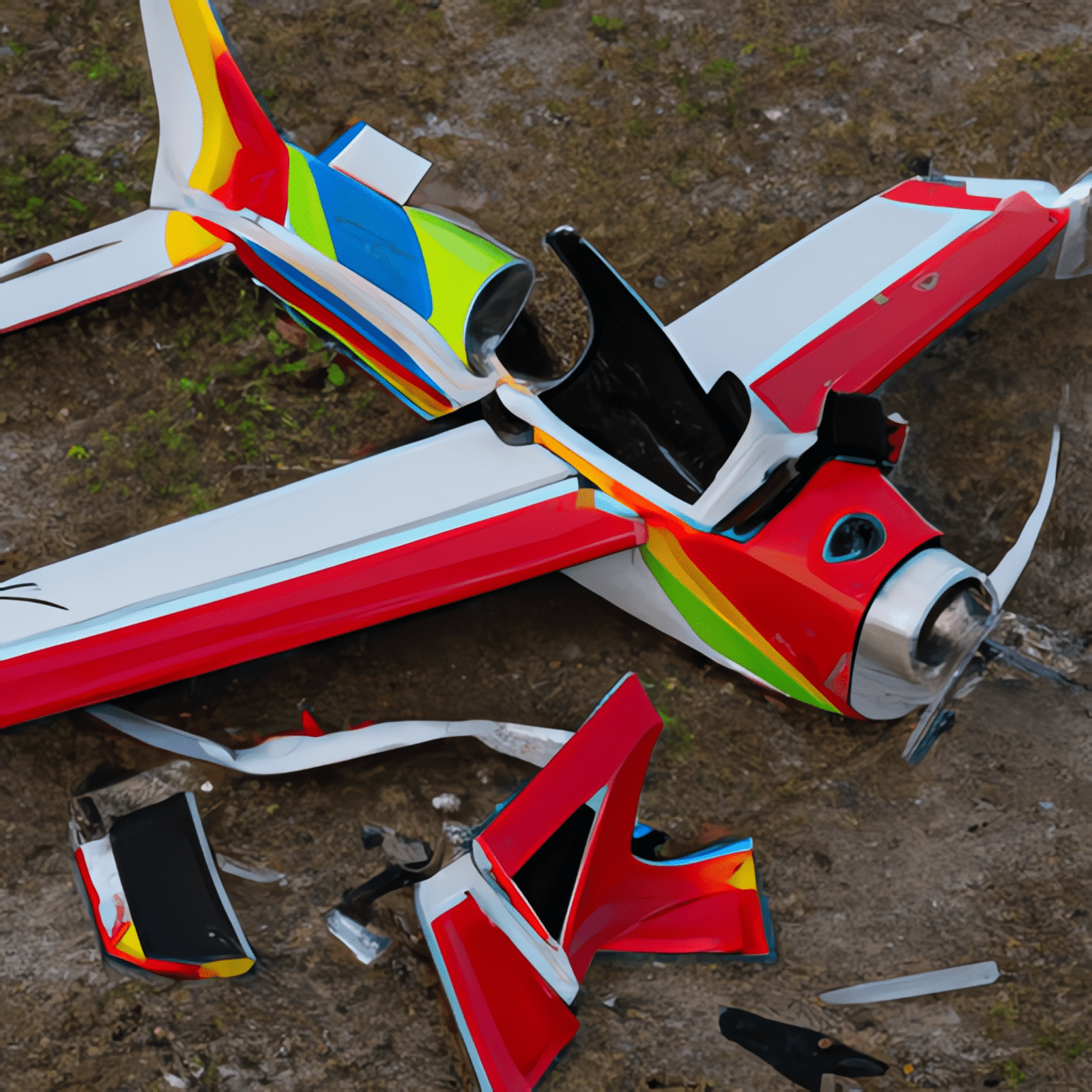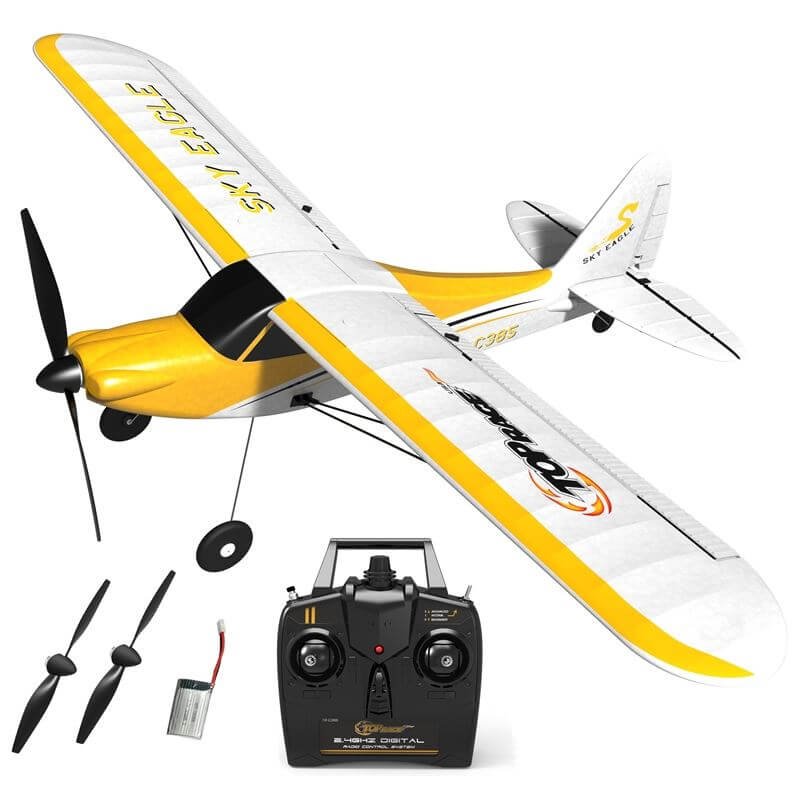Any links on this page that lead to products on Amazon, the Ebay Partner Network (EPN) and other companies may be affiliate links and we earn a commission if you make a qualifying purchase. Thanks in advance for your support!
Free flying RC planes hurtling around the skies, sometimes at over 100 mph, can be an awesome sight, but are they really safe? This article takes a look at the statistics, and considers how you can improve safety when flying.
Are RC Planes safe? Yes, they are, but it’s important to follow safety guidance when flying them, particularly if you are flying near spectators or restricted areas such as commercial airfields. Incorporating SAFE technology into your model will improve the stability of the airplane and result in fewer accidents.
Read on to find out what type of accidents do happen, and how you can improve safety and avoid accidents with your RC plane.
Just starting out with RC Planes? Take a look at the latest recommended RTF (ready to fly) and easy-to-fly RC Planes, which will make getting into the air easy peasy and cheap – here.
Accidents Can Happen
RC models can go fast – very fast. To find out just how fast, check out my article on RC Plane speed here.
Generally, the faster they go, the more dangerous they can be.
But even at slow speeds, the combination of a fast-spinning prop with a model which can weigh up to 50 or 60 lbs can spell disaster in an accident.
Whilst accident statistics are difficult to come by, there is the occasional major accident reported over time, and probably many more minor, unreported ones.
Generally, flying accidents occur due to one or more of the following:
- Interruptions in the signal transmission
- Failure of the model construction in flight
- Pilot error
A researcher reported in 2006 an average of 1 fatality a year, but a significant number of injuries – mostly to the operators, also to “helpers” of inexperienced pilots doing hand-toss launches. The most common reported injury (usually reported means treated at a hospital) is gasoline explosions- just like RC cars and boats. But collision during aerobatics is the most common fatality, and the most common reported cause is interference on the radio frequency.
Here’s a short video of 2 crashes involving spectators (no one was hurt in the incidents)
Occasionally there is a more serious accident. In 2006 a couple was killed in Hungary at an event where a large RC plane plowed into the crowd. The model airplane that crashed had a 6 1/2-foot wingspan and was being directed from the ground by an experienced German flyer.
Reports suggested that the cause of the accident was the loss of control due to radio interference.
Accidents don’t just happen in the air – they can happen on the ground in preparing for flight. More details on this are given below.
To be sure, and just in case, your best bet is to take out insurance. More about that here.
If you fly indoors during the winter months, insurance may be even more important, given the higher chance of accidents. More about flying indoors, here.
To avoid any form of accident, read on to glean some key safety tips from the experts…
Safety Tips
In the US, The Academy of Model Aeronautics (AMA) has published a Safety Handbook which provides comprehensive safety guidance for rc plane flyers.
In the UK, flying clubs are regulated by the British Model Flying Association (BMFA), which publishes its own comprehensive guide, the British Model Flying Association Handbook and Guidance.
The safety tips provided by these organisations are comparable, and can be summarised as follows (though there is much more detail in the respective handbooks, and they should be compulsory reading for all pilots):
- Immediately before take-off, flight controls must be checked for full, free and correct movement under full power if applicable. If there are any doubts as to their operation, DO NOT FLY.
- A pilot should check for proper fitting and placement of parts, with special attention to the engine(s), propeller(s), and control surfaces.
- Stay clear of the propeller arc while starting or running any engine or motor. Painting tips of propellers a bright color helps you to better see the propeller arc during rotation.
- Batteries have a risk of fire or failure, which can result from improper charging, crash damage, or shorting the batteries.
- The starting area must be carefully chosen. Considerations include wind strength and direction, relative position of buildings, runways, vehicle parking, spectator areas, and the place where models are expected to land after a normal flight, according to the wind.
- Free Flight models should be flown in an area that is clear of obstacles, persons, and other property that could be damaged by the model.
- Don’t intentionally fly behind the safety line.
- First-Person View (FPV) refers to the operation of a Radio Control model aircraft using an onboard camera’s cockpit view to orient and control the aircraft. The handbooks advise that the model is kept within line of site throughout the flight and an observer accompanies the pilot to keep an eye on the plane.
- The AMA has established a program for models having gas turbine engines, which includes the requirement for pilots to have a turbine waiver issued by AMA prior to any solo operation.
- The AMA also has specific safety advice for larger RC Planes (over 55 lbs), models using pulse jet engines, combat flyers, and racing operations.
- In the UK, the BMFA uses the acronym S.W.E.E.T.S., standing for S – Sun W – Wind E – Eventualities E – Emergencies (Inc. Failsafes) T – Transmitter Control S – Site Rules. This acts as a checklist for safe flight.
- Inexperienced R/C flyers should never fly without an experienced helper.
- All flyers should use the same take-off area at any particular flying session.
- Do not taxi in or out of the pits area. Wheel or carry your model well clear of the pits before commencing taxying and stop the model well clear when taxying back after landing.
- Always make the initial turn after take-off away from spectators and parking areas. Diving manoeuvres should always be pointed away from spectators, parking areas and other people.
- DO NOT OVERFLY houses, domestic gardens, car parks, traffic, railways, organised games or spectators. Do not fly near stadiums, critical infrastructure (correctional facilities, water treatment centers, utilities, etc.), large open air events, or any time or place where model aircraft operations are prohibited.
- Take extra care when flying in adverse weather conditions. It is easy to lose sight of your model in fog or low cloud. Strong winds and turbulence can be a stimulating challenge but can catch out the unwary. Flying in rain can give serious radio problems if water gets inside your transmitter. I’ve written more about flying in rain here.
FAA and CAA Regulations & Safety
These regulations are to make RC model flying safer for everyone using the skies.
US Regulations
The FAA require “the aircraft is operated in accordance with a community-based set of safety guidelines and within the programming of a nationwide community-based organization. (Section 336, Special Rule for Model Aircraft.) Under Section 336, AMA members can operate their model aircraft within the boundaries of AMA’s safety guidelines and programming
When within five (5) miles of an airport, AMA members must notify the airport(s) before model operations take place.
When within three (3) miles of an airport, model aircraft should remain below 400 feet above the ground unless there is notification or an agreement with the airport that allows models to safely go higher.
The FAA require rc models are registered with them and marked up accordingly, and it is shortly to bring in an online competency test for RC flyers to improve safety in the hobby.
UK Regulations
In the UK, The regulations for model aircraft flights are contained within the Air Navigation Order 2016 (ANO). A set of specific regulations apply to aircraft that have a mass of 20kg or less (which are termed ‘small unmanned aircraft’ within the ANO).
In simple terms, these regulations state that:
- You are responsible for flying your model aircraft in a safe manner
- You must keep the model aircraft in your direct sight at all times while it is flying, so that you can ensure that it does not collide with anything, especially other aircraft
- You must not endanger anyone, or any thing with your model aircraft, including any articles that you drop from it
- You must not fly at a height greater than 400ft above the surface unless permitted to by the CAA.
- You must not fly within the Flight Restriction Zone of a protected aerodrome
You are now required to take an online test and register your model aircraft with the CAA. More details can be found here.
What is the SAFE System?
Technology can help to make the rc model safer. A number of onboard systems have been developed which are aimed at minimising one of the main causes of accidents – pilot error.
The SAFE system (Sensor Assisted Flight Envelope) is equipment and software which attenuates the more extreme movements of the model to enable the pilot to control the aircraft more easily. It is incorporated into a number of beginner and intermediate models.
The ultimate recovery mode is “panic”, when the pilot loses complete control over the aircraft and the SAFE system normalises the controls so that recovery is assured.
Many beginner rc planes now incorporate stabilization systems to make learning to fly a whole lot easier.
What is the AS3X Safety System?
AS3X ( Artificial Stabilization 3-Axis) works to keep the aircraft on its current commanded path. If the integrated gyros sense a change due to an outside force (eg wind), the system provides corrective control inputs to the servos. This makes it seem as if the wind is having no impact on the model. As a result, the model is safer.
With this system, there is no “panic” button, but the AS3X system can work in conjunction with the SAFE system.

This is the E-flite Timber X 1.2m BNF Basic with AS3X and SAFE Select. Short Takeoff and Landing (STOL) capabilities in a design featuring sporty flight performance and ultra-friendly handling.
Are Hazardous Materials Used in RC Plane Construction?
Yes they are. Whilst its important to ensure that rc planes are safe to fly, it’s also wise to consider hazardous materials used in their construction, to which you may be exposed. These materials include Carbon fibre, Kevlar, Superglues, Resins, Methanol and Petrol. To keep safe, ensure these materials are handled carefully.
For more about what rc planes are made of, check out this post, here.
Carbon (and sometimes boron) fibre This is regularly used as strengthening and structural material in models, and can be hazardous, particularly when repairing, cutting or sanding the material. These fibres, when stressed or fractured give off clouds of ultrafine microscopic fibres. Long term exposure may have very serious consequences.
Whenever working with such material, always wear an appropriate mask. Vacuum the work surface and your hands regularly. When finished, always wash your hands initially in COLD water.
Kevlar fibres May also give long term problems so equal care should be taken if using this material. If any model aircraft is built or repaired using composite materials or parts then it is essential to be particularly diligent in picking up any debris after a crash or mid-air collision. Composite shards do not degrade quickly and can be a dangerous hazard in and on the ground for many years.
Cyanoacrylate glues (superglues) These are well known for causing severe allergic reactions in some people and such reactions can build up over time. Work in a well ventilated area, avoid breathing superglue fumes and, if necessary, wear a fume proof mask and eye protection. Superglue fumes may be absorbed through the tear ducts.
Epoxy and polyester resins These are also known to build up allergic reaction in some people over time.
Methanol This is fairly safe to store in a cool place and out of sunlight. However, it is a poison and the ingestion of even small quantities can be dangerous. Don’t let it stay on your skin if you spill any.
Petrol An increasingly used fuel and the ease with which its vapour ignites make it one to be very careful with. A small spark can lead to a big explosion. Don’t store it or try to transfer it between containers indoors.
Smoke Systems. Some of the oils used in model aircraft smoke systems are known to be carcinogenic when burnt and all of them are irritants to varying degrees, even the purer types.




